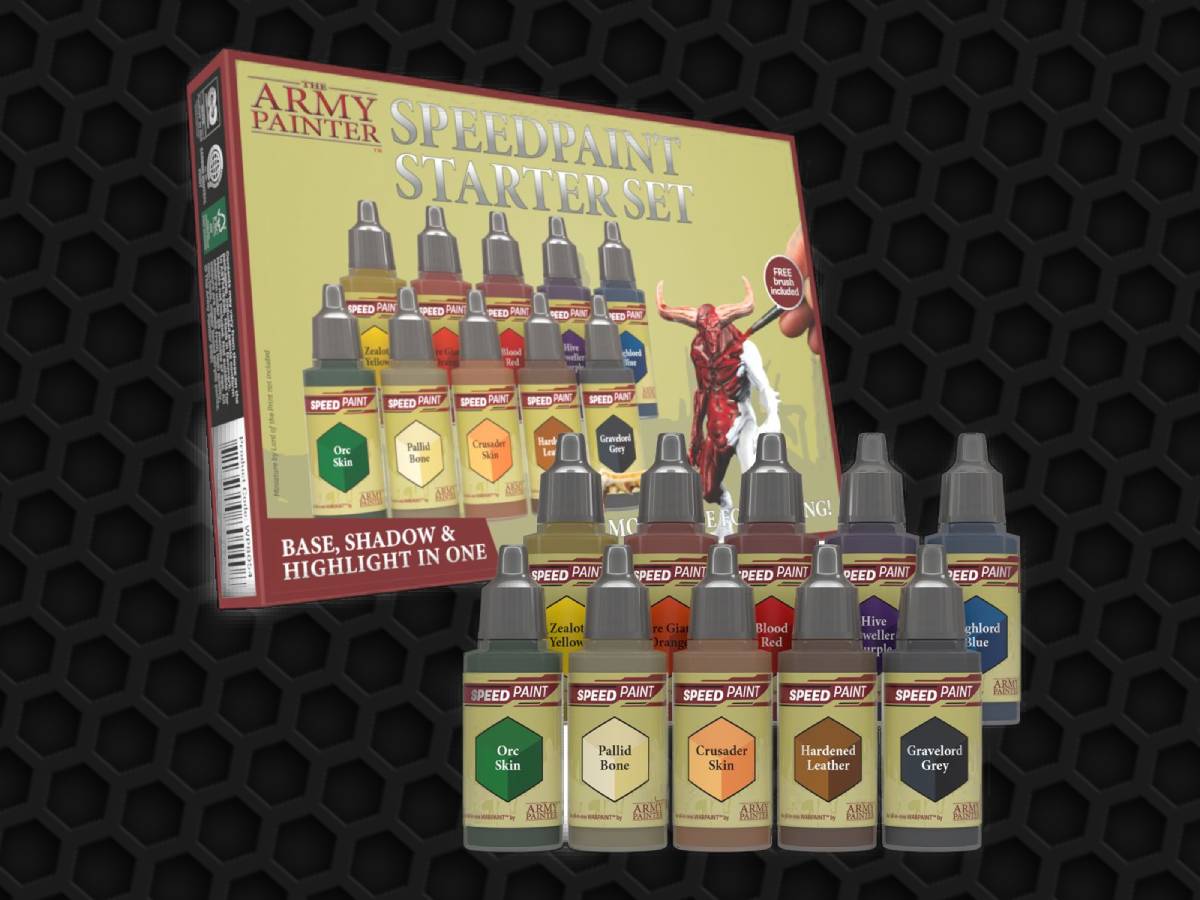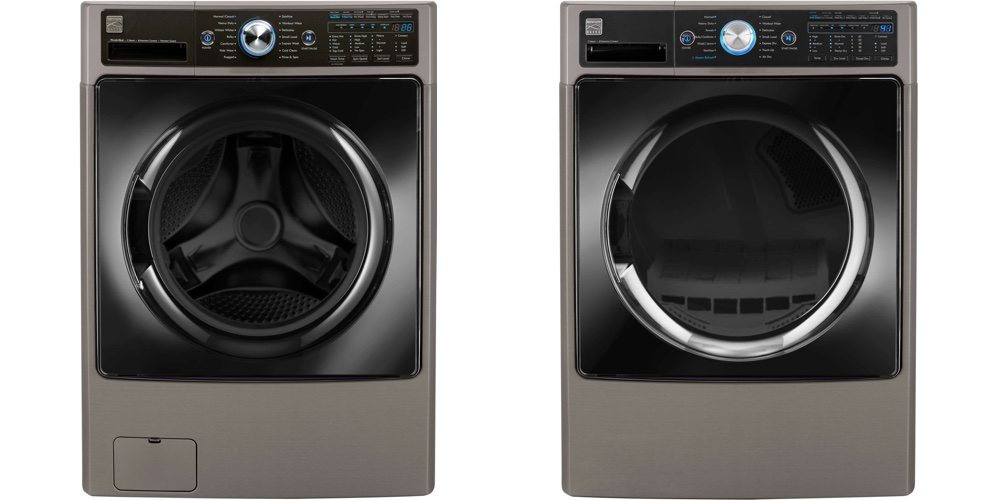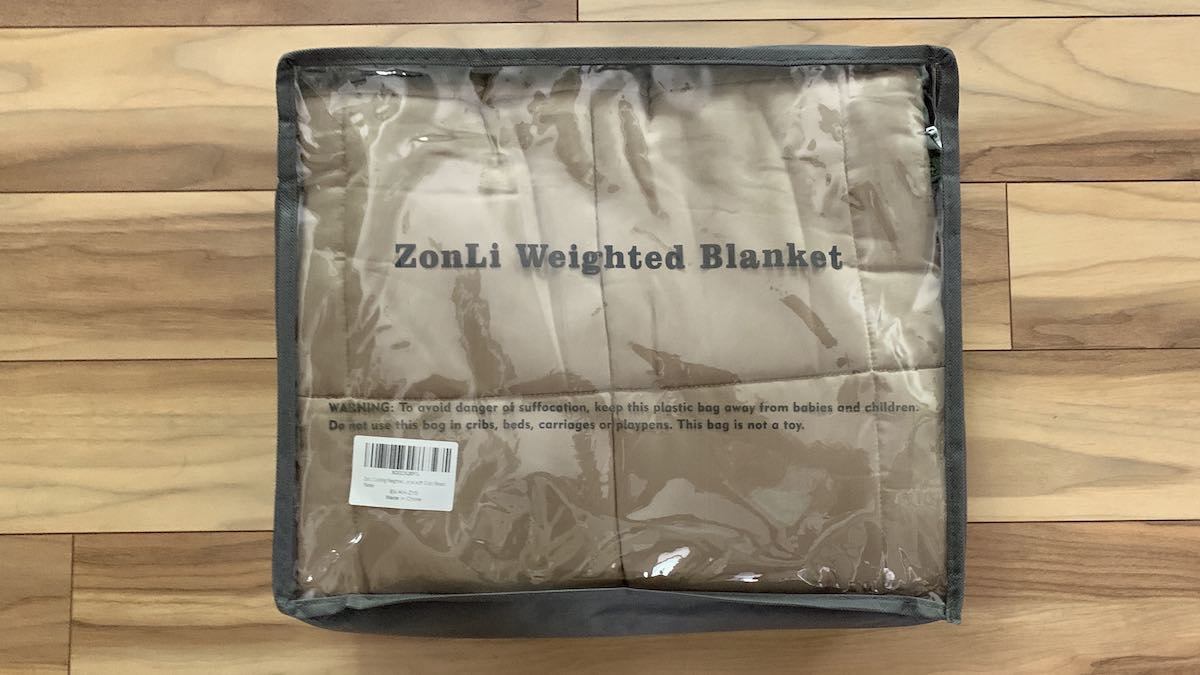Like the majority of adult tabletop gamers, I have a lot of unpainted miniatures, and not a lot of time to devote to painting them. Much as I admire the gorgeous professionally painted minis that grace the boxes of my games, I know that I have neither the skill nor the patience to get those kinds of results. So how can I paint miniatures quickly, while still having them look good on my game table?
Enter The Army Painter’s new line: Speedpaint.
What Is Speedpaint?
The Army Painter bills Speedpaint as “truly a one-coat painting solution.” The paint is formulated with a resin medium. The Speedpaint’s pigment sinks into the recesses of a miniature, giving you shade, a base color, and highlights, all in one coat of paint.
Recently, The Army Painter sent me out their Speedpaint Starter Set to review. The set retails for $45, and is available on Amazon, at your friendly local game store, or directly from The Army Painter.
The Army Painter Speedpaint Starter Set

Inside of the box you’ll find a Wargamer: Monster paint brush, a painting guide, and the following ten 18ml Speedpaint colors:
- Pallid Bone
- Zealot Yellow
- Fire Giant Orange
- Blood Red
- Hive Dweller Purple
- Highlord Blue
- Orc Skin
- Hardened Leather
- Crusader Skin
- Gravelord Grey
Each of the bottles has two metal mixing balls inside, making it very easy to maintain the consistency of the paints.
Using Speedpaint
If you’d like to see the Speedpaints in action, you can look at this tutorial video from The Army Painter:
For my part, I wanted to approach this review not as a professional painter(which I’m definitely not) but more from the perspective of someone that’s on the newer side of the hobby. In other words, if you’re one of those people that has little to no experience painting miniatures but have been interested in painting up the miniatures in one of your board games, or maybe getting started with a tabletop skirmish game like Marvel Crisis Protocol.
Any time you paint a miniature, you’ll always start with priming it. In the case of Speedpaint, you’ll want to use a lighter-toned primer. As you can see below, the exact tone of the primer will affect the result you get with the Speedpaint:
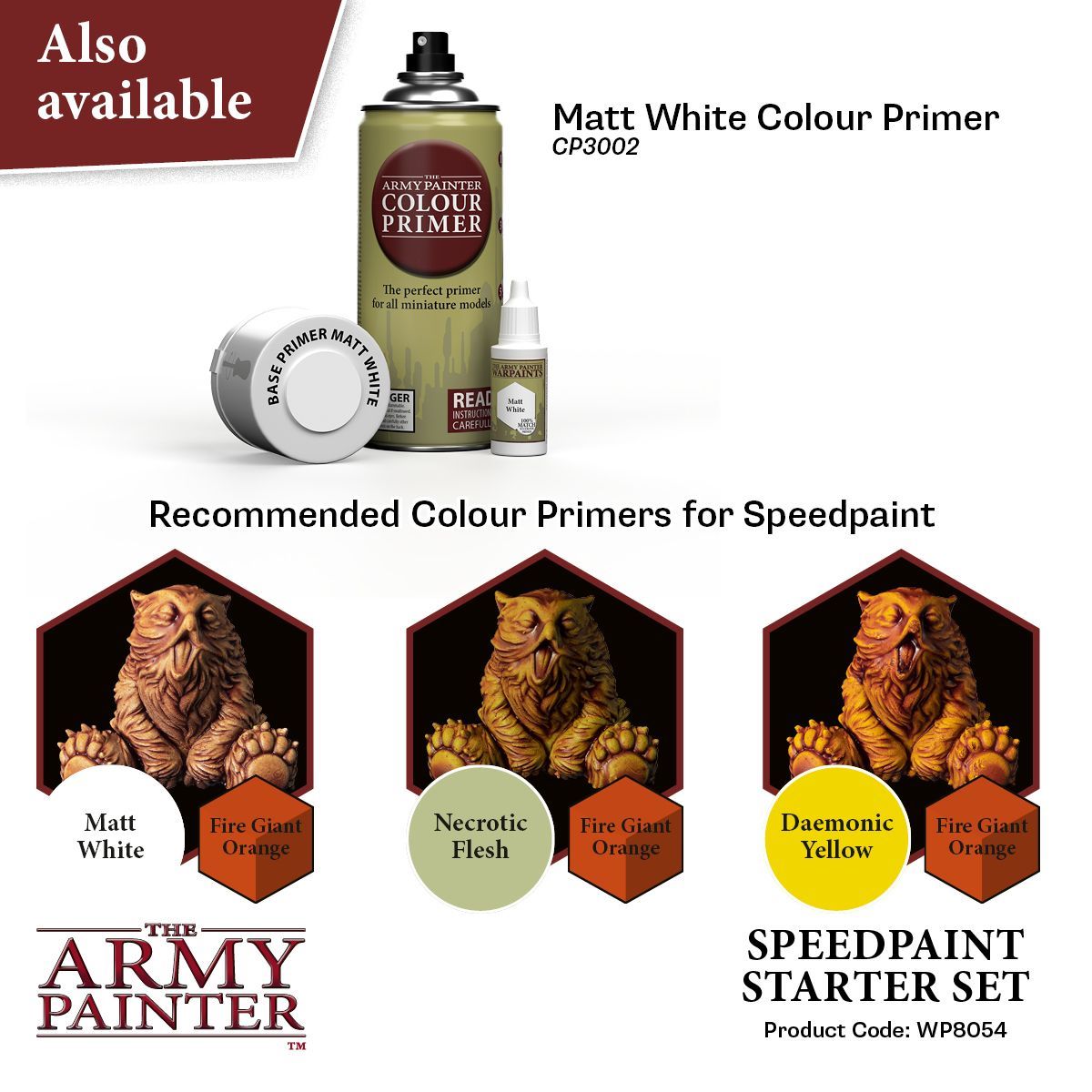
I decided to start with two identical miniatures, but with two different primers. Using a Games Workshop Ork Warrior model, I primed one with Citadel Wraithbone spray primer, and the other with The Army Painter Matte White Colour spray primer.
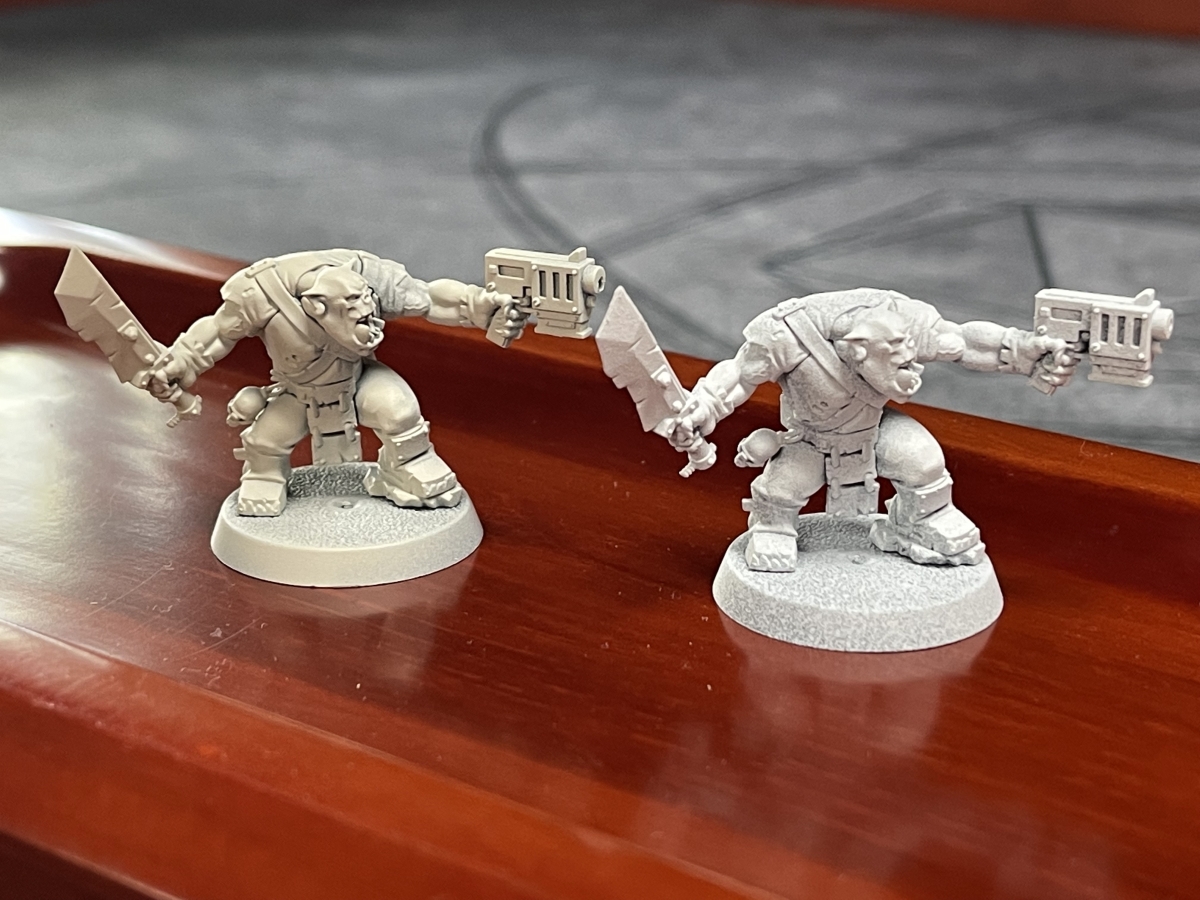
Unfortunately, the can of Matte White primer turned out to be defective, and had very low pressure. As it was going to take a bit of time to get a replacement can, I decided to press on ahead with it anyway.
Putting myself in the mindset of a beginning painter, I chose to only use the included paintbrush. It’s a good choice for inclusion, as it turned out to be good for covering the models, but could also hold a point well for smaller areas.

I wanted to do my best to paint both models identically, using the same colors for both to compare tones. As this is only a starter set of 10 paints, I didn’t fully paint the models, as I was missing some key colors that I would want to use to finish them. Still, I figured this would give a good example of how a model looks when painted with Speedpaints. Here are the two Orks, with the colors I used showing behind them. Following Army Painter’s guidelines, I only used one generous coat of each color on the model.

As these are going to be Orks of the Bad Moons Klan, they feature yellow paint on armor and details. At this stage, I have only used Speedpaint colors. With the Matte White primer, the Speedpaint doesn’t seem to have worked as well as with the Wraithbone. I can only assume that was a result of the defective can of spray paint. Here are some closer pictures of the two models, for comparison’s sake:
Really liking how the Wraithbone-primed model was looking with the Speedpaints, I decided to “cheat” a bit and use a couple of additional paints on it. While The Army Painter does have a black paint available in their Speedpaint Mega Set, that larger set doesn’t release until March 26th. As I had a bottle of the Citadel Black Templar Contrast paint sitting around, I used that to paint the gloves, boots, and weapons of the Ork model. I finally drybrushed on a bit of The Army Painter Gun Metal warpaint, and this is the end result:
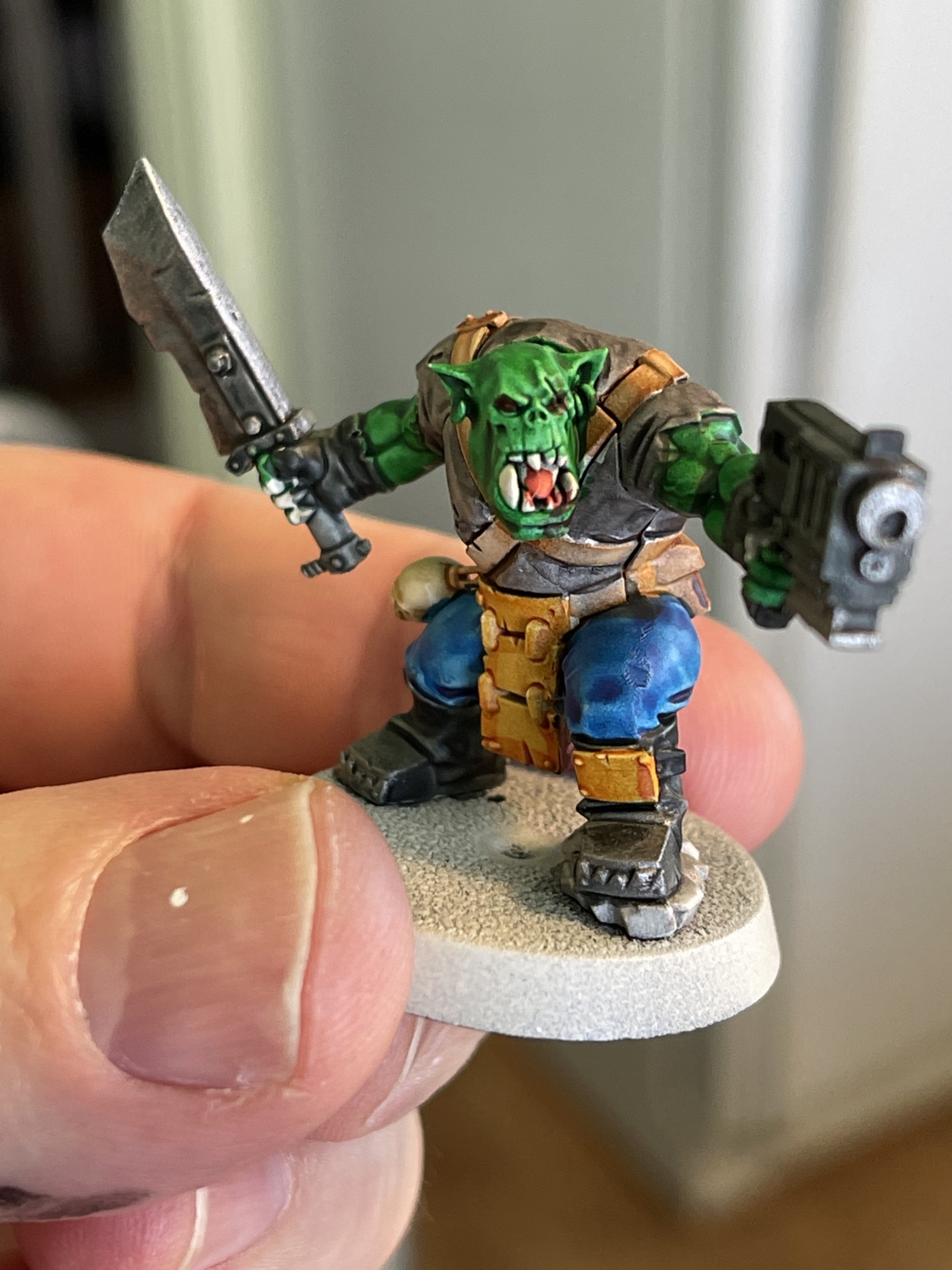
While the miniature obviously needs the base finished and has a few small areas where I missed getting paint or overpainted a color, overall it has a very nice “tabletop-ready” appearance.
I decided to try one additional Ork painting test, this time using a paint-on primer, the Pro Acryl White primer. This was the end result:

With the brush-on primer, I ended up with a somewhat splotchy finish, which was even more evident when looking at the back of the miniature. I also felt the resulting tone of the colors was far brighter than I would want for an Ork army.
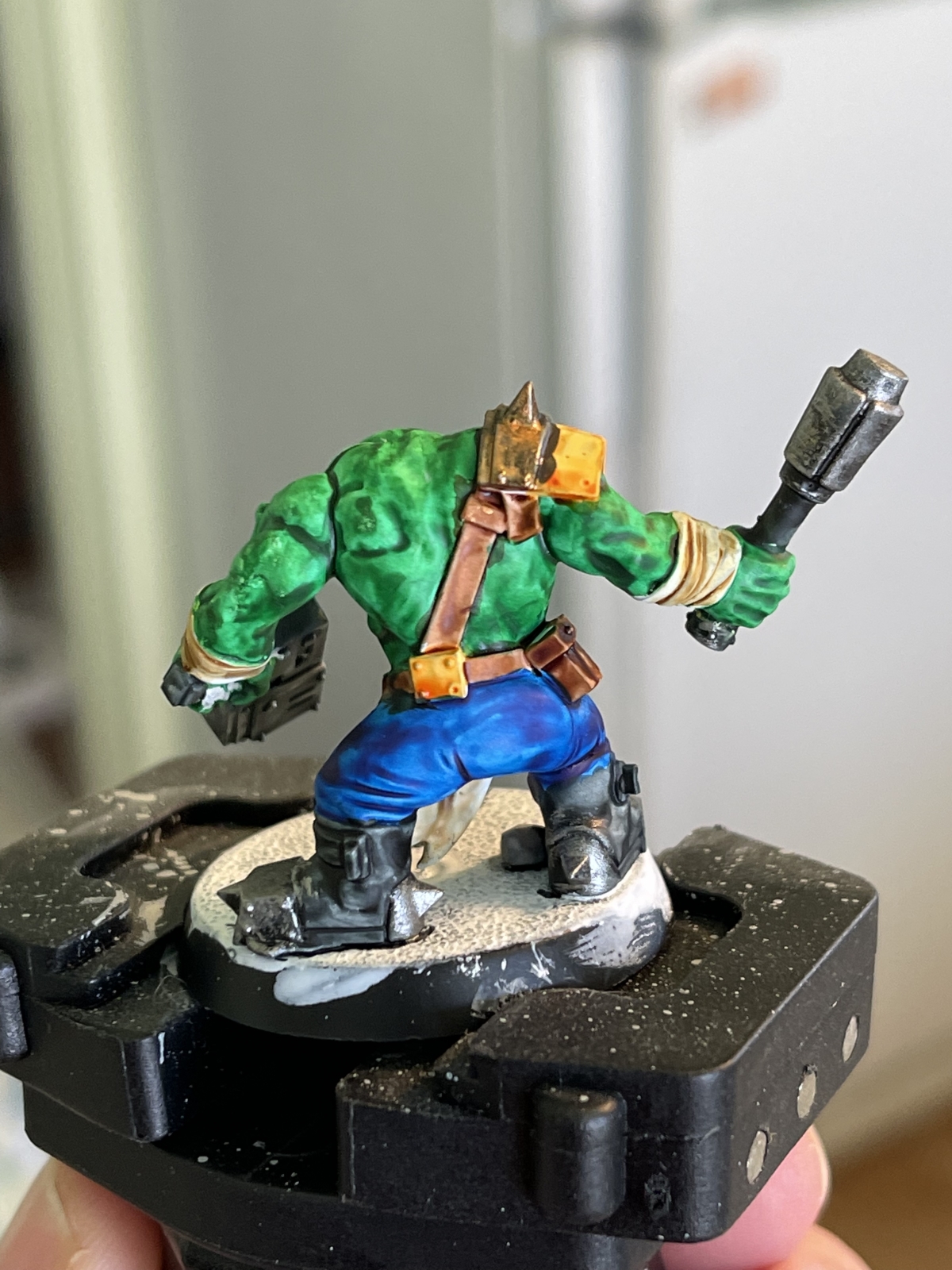
Even with the less than ideal result of painting over the paint-on primer, you can still see how Speedpaints provide shading, base color, and highlight, just from the single coat.

Going back to the Wraithbone primer, I decided to really put the speed in Speedpaint. Taking some Games Workshop fantasy models, I sacrificed accuracy for seeing just how fast I could get some of the Speedpaint onto the models. Here are the results. Note that I spent about 3 minutes per skeleton, and probably 10 minutes total on the Necromancer. These are definitely NOT ready for the tabletop, but should still give you an idea of just how much you can accomplish with very little time spent painting:
This also gave me an opportunity to use the only 3 colors in the Speedpaint Starter Set that I hadn’t yet used, to see how they looked. Those last paints were Crusader Skin, Hive Dweller Purple, and Fire Giant Orange.
Speedpaint VS Contrast Paint
Some of our readers are probably familiar with Citadel Contrast Paint, which is a product somewhat similar to The Army Painter Speedpaint. However, there are some key differences between these products worth pointing out:
- Pigment. The formulation of Speedpaint provides a much more opaque coat than Contrast Paint, allowing Army Painter to make good on their promise of single-coat paint application.
- Bottles vs pots. Bottles make it much easier to get paint onto a palette than pots, and are better for keeping paint from drying out.
- Metal mixing balls. Allows for quick and easy stirring of paint.
- Cost. Breaking down the cost of the Starter Set, a Wargamer: Monster brush retails for $7.99 USD. That means that each 18ml bottle of Speedpaint is approximately $3.70 retail. An 18ml pot of Contrast Paint is $7.80 USD retail.
Why You Should Get The Army Painter Speedpaint Starter Set
Overall, I was very impressed with the Speedpaint Starter Set. When used with an even, smooth coat of spray primer, a single application of each color gave nice depth and tone. The included brush was great in applying the paint, and the inclusion of metal mixing balls in the bottles was a welcome addition.
While painting the miniatures, I found that I had pretty good brush control of the Speedpaints. On the occasion that I felt I had too much pigment pooled up, I could easily remove it with a dry brush.
Were I to get any of these miniatures truly ready for the table, I would have to take some additional steps. First, I would have to make sure that I had full paint coverage on the models. One of the caveats of using a light-toned primer is that it’s unforgiving. When you prime a model black, if you miss a spot, the visible primer underneath just reads as shading. But with a white or off white, a missed spot can become glaringly obvious. But that’s an issue any time you paint with a light-toned primer, whether you’re using Speedpaints or a standard acrylic paint.
An issue specific to Speedpaints comes up when you want to correct a mistake and/or add additional highlights or details. If the Speedpaint layer underneath isn’t completely dry, you can reactivate the Speedpaint layer by painting over it, thereby ruining the work you’ve already done. So you will want to give the Speedpaint plenty of time to dry. If you’re being really careful, after your initial application of Speedpaints on the model, you can seal it with a matte sealant before moving on to applying other paints. As the video from The Army Painter demonstrates, you can even paint white over an area if you want to apply more Speedpaint.
While the extra time spent ensuring you don’t reactivate the Speedpaint is an inconvenience, I believe the utility and quality of the Speedpaints outweighs that issue. I felt the results I got with Speedpaint look much more like traditionally-painted models than what you get with miniatures painted with Citadel Contrast paints. My only regret is that I only had the 10 colors of the Starter Set to play with. I’ve got a Warhammer 40,000 army begging to be painted, and by using Speedpaints, I’ll be able to get a great looking force swiftly to the table.
If you’re interested in checking out Speedpaint, head over to the The Army Painter’s website.
As an Amazon affiliate, I may earn a small commission on qualified purchases.
Click here to see all our tabletop game reviews.
![]() To subscribe to GeekDad’s tabletop gaming coverage, please copy this link and add it to your RSS reader.
To subscribe to GeekDad’s tabletop gaming coverage, please copy this link and add it to your RSS reader.
Disclosure: GeekDad received a copy of this paint set for review purposes.
